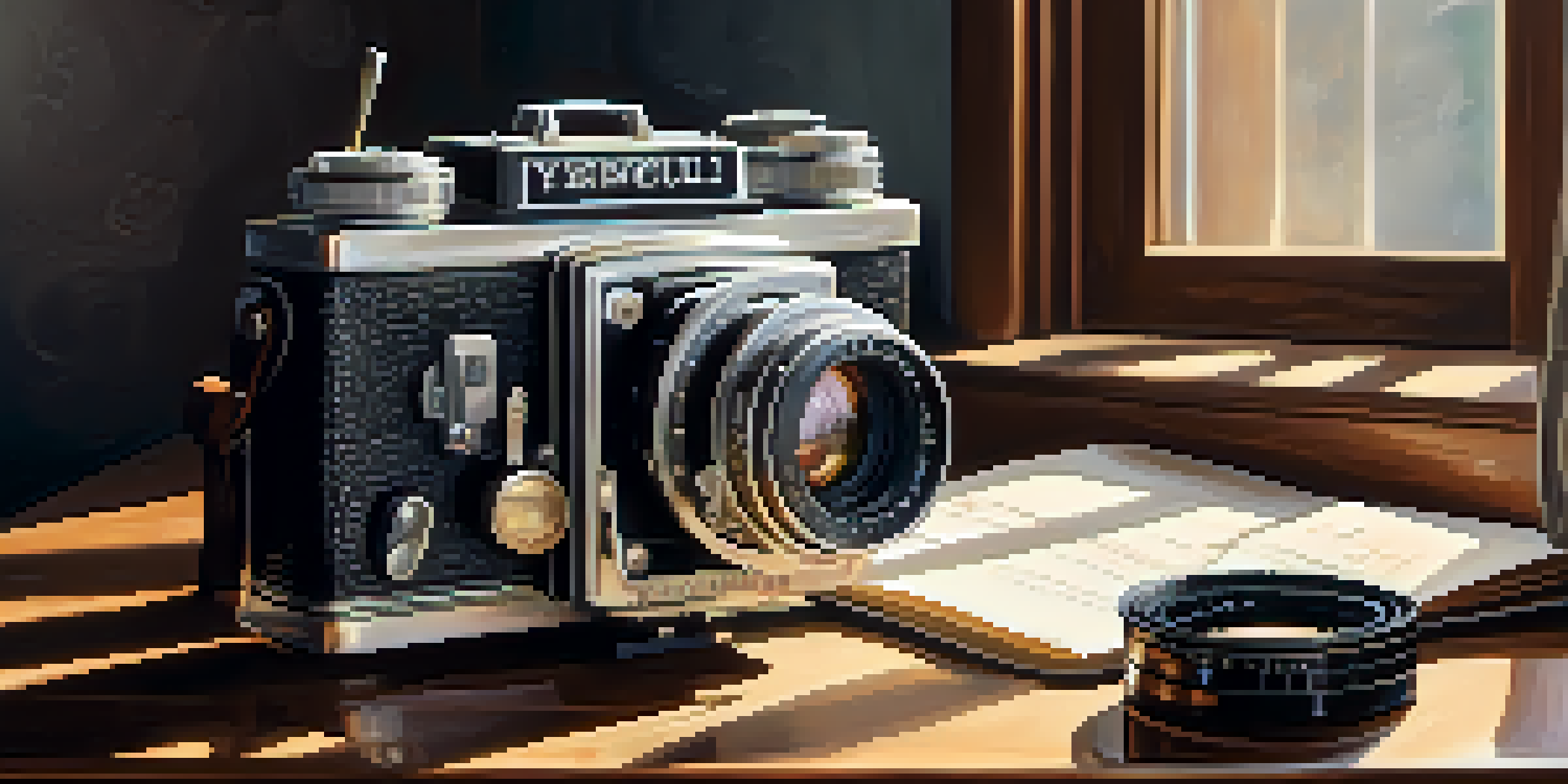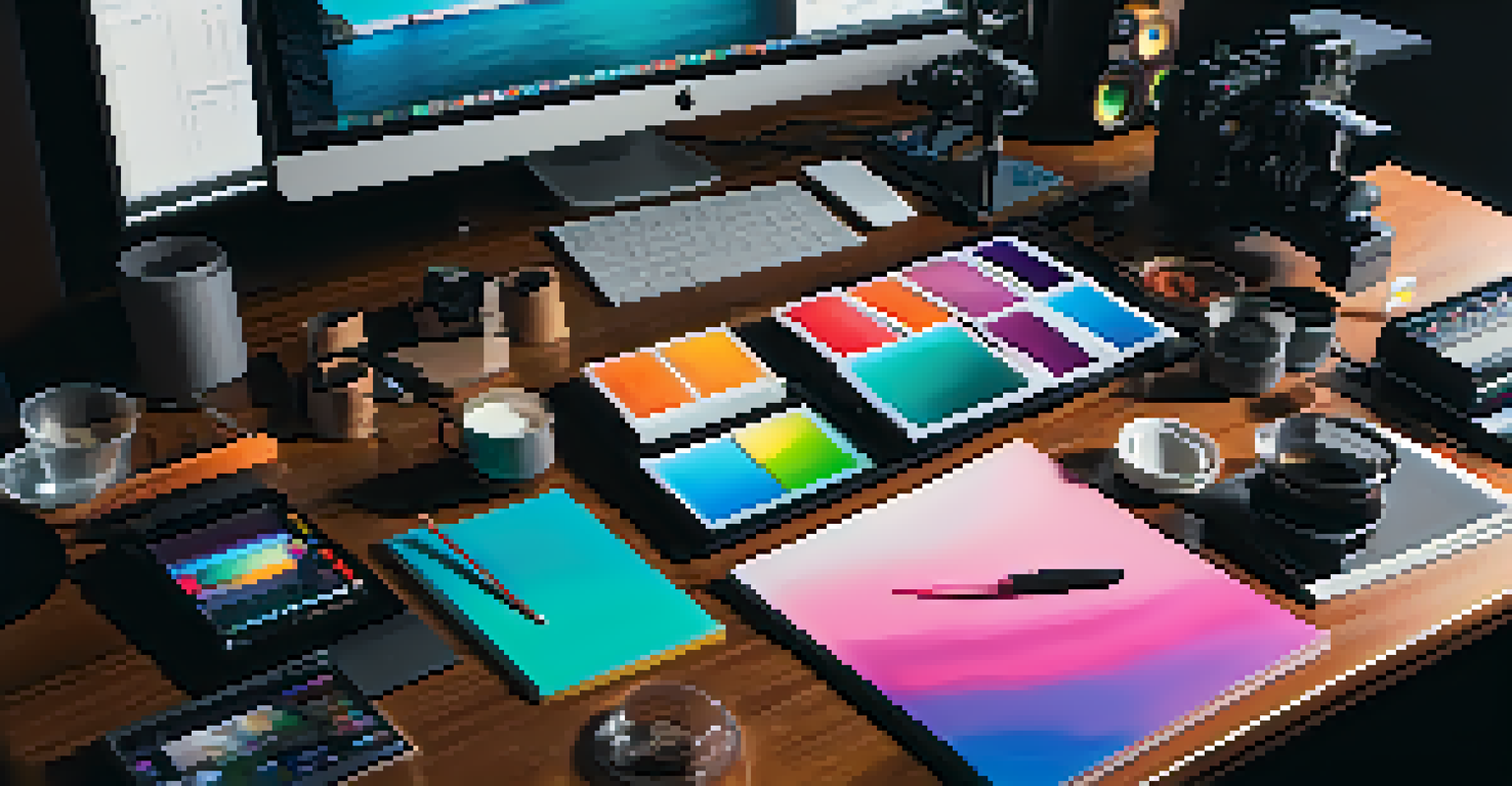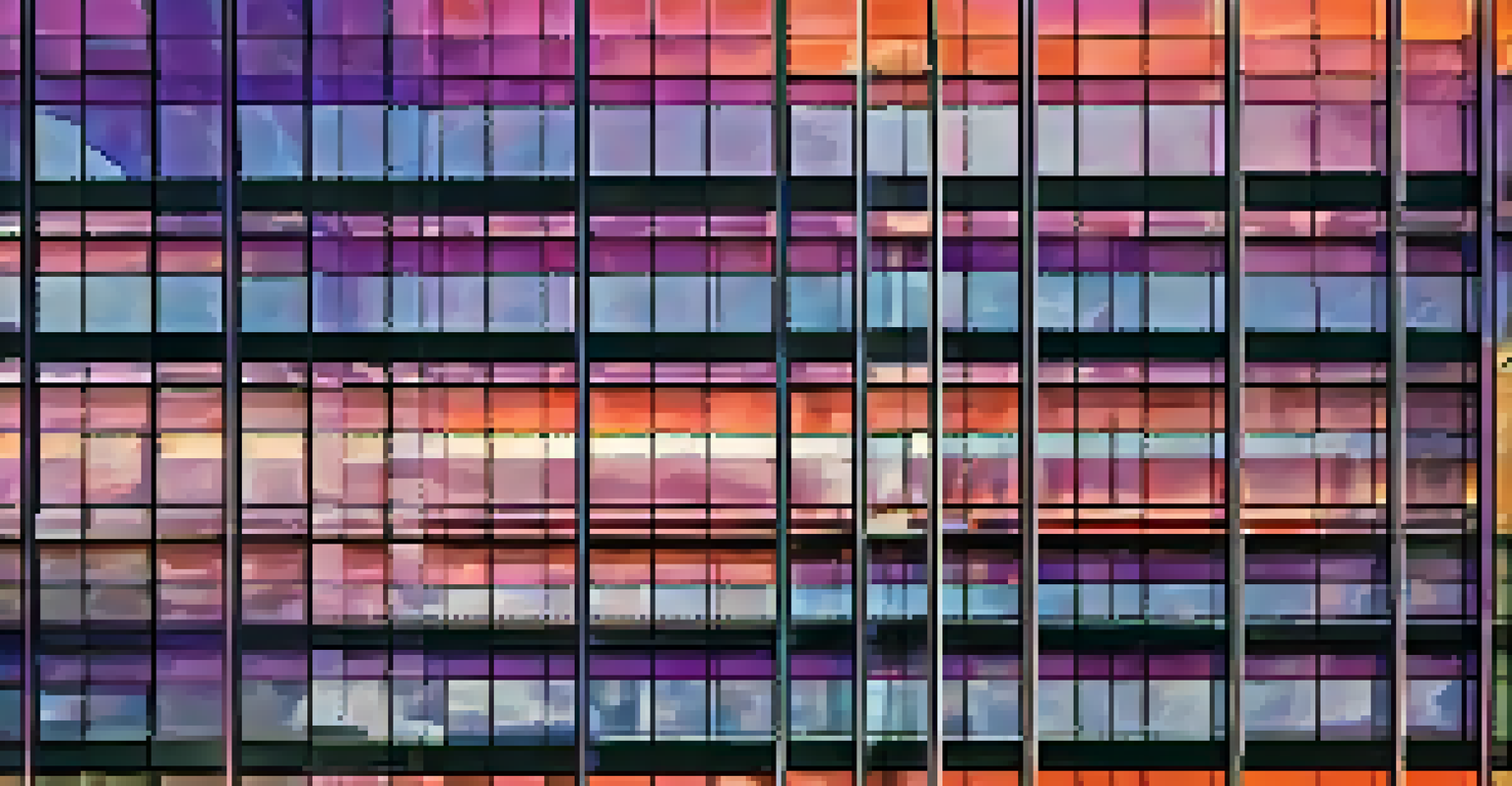Cinematography Techniques: Crafting Visual Narratives in Film

Understanding Cinematography: The Visual Language of Film
Cinematography is often described as the art of capturing images on film, but it's much more than that. It's a visual language that communicates emotions, themes, and narratives without uttering a single word. Just as a painter uses colors to evoke feelings, a cinematographer employs lighting, composition, and camera angles to tell a story.
Cinematography is infinite in its potential because it can communicate a vast range of ideas and emotions without the use of words.
For example, a close-up shot can reveal a character's inner turmoil, while a wide shot can establish the setting's mood. This ability to convey meaning through visuals is what makes cinematography a crucial aspect of filmmaking. It's about using the camera as a storytelling device, engaging the audience's senses and emotions.
In this section, we’ll delve deeper into the core elements that define cinematography, laying the foundation for understanding how these techniques come together to create compelling visual narratives.
The Power of Lighting: Creating Atmosphere and Mood
Lighting is one of the most essential tools in a cinematographer's arsenal. It sets the tone and mood of a scene, influencing how the audience perceives the story. For instance, a brightly lit scene may evoke feelings of joy and hope, whereas dim lighting can create suspense or sadness.

Consider the classic film 'Blade Runner.' The use of neon lights and shadows not only establishes a futuristic world but also enhances the film's themes of isolation and existential dread. By manipulating light and shadow, cinematographers can guide the viewer's emotional journey throughout the film.
Cinematography as Visual Language
Cinematography transcends mere image capture, using visuals to convey emotions and narratives without words.
In this section, we'll explore various lighting techniques such as high-key, low-key, and natural lighting, and how they can transform a simple scene into something visually striking and emotionally resonant.
Camera Angles and Movement: Shaping Perspectives
Camera angles and movements play a significant role in shaping how a story is perceived. The angle at which a shot is taken can drastically alter the viewer's understanding of the scene. For example, a low-angle shot can make a character appear powerful, while a high-angle shot can suggest vulnerability.
The camera is an instrument that teaches people how to see without a camera.
Moreover, camera movements—like pans, tilts, and tracking shots—add dynamism to storytelling. Think of a chase scene; a shaky hand-held camera can heighten the tension and urgency, pulling the audience into the action. These techniques create a visceral experience, making viewers feel as if they are part of the story.
In this section, we’ll discuss various camera techniques and how they can be strategically employed to manipulate audience perception and enhance the narrative.
Composition: Framing the Perfect Shot
Composition refers to how elements within a shot are arranged. A well-composed shot can draw the viewer's eye to the most important aspects of the scene, guiding their focus and enhancing the storytelling. Techniques such as the rule of thirds, leading lines, and symmetry can create visually appealing images that resonate.
For example, in 'The Grand Budapest Hotel,' Wes Anderson uses symmetrical compositions to evoke a sense of order and whimsy, which reflects the film's themes. Each frame is meticulously crafted, showcasing how composition can elevate a visual narrative.
Lighting Shapes Emotional Tone
The manipulation of lighting in film creates mood and atmosphere, significantly influencing audience perception.
In this section, we’ll uncover the principles of composition and how they can be utilized to create stunning shots that effectively convey the intended message.
Color Grading: Setting the Emotional Tone
Color grading is the process of altering and enhancing the color of a film. This technique can significantly influence the emotional tone and atmosphere of a scene. For instance, a warm color palette might evoke feelings of nostalgia, while cooler tones can create a sense of detachment or sadness.
Films like 'Mad Max: Fury Road' use color grading masterfully to enhance their storytelling. The vivid, saturated colors not only serve to create a striking visual style but also emphasize the film's themes of chaos and survival. Color grading can transform the entire viewing experience, adding depth to the narrative.
In this section, we’ll explore the importance of color in film and how color grading contributes to the overall impact of a cinematic experience.
The Role of Depth of Field: Focusing the Narrative
Depth of field refers to the range of distance within a scene that appears sharp and in focus. A shallow depth of field can isolate a subject from the background, drawing the viewer's attention to the character's emotions or actions. Conversely, a deep depth of field allows for a broader view of the scene, adding context and detail.
In 'The Social Network,' the use of shallow depth of field during intense conversations emphasizes the characters' emotional states, making them more relatable to the audience. This technique not only focuses attention but also enhances the storytelling by highlighting key moments.
Composition Guides Viewer Focus
Effective composition directs the viewer's attention and enhances storytelling by arranging shot elements thoughtfully.
In this section, we’ll discuss how depth of field can be effectively utilized to guide the audience's focus and enhance the narrative.
The Importance of Shot Selection: Crafting Visual Rhythm
Shot selection refers to the choices made regarding the types of shots used in a film. This can range from wide shots to extreme close-ups, each contributing to the overall visual rhythm of the narrative. A well-thought-out selection can create a harmonious flow, enhancing the emotional impact of the story.
For example, in 'Birdman,' the seamless transitions between shots create a sense of real-time urgency, immersing the audience in the protagonist's chaotic world. The rhythm established by shot selection can dictate the pacing and emotional trajectory of a film.

In this section, we’ll examine the significance of shot selection and how it plays a vital role in crafting a compelling visual narrative.
Conclusion: The Art of Visual Storytelling in Cinematography
Cinematography is truly an art form that combines technical skill with creative expression. Each technique discussed contributes to the larger picture of visual storytelling, allowing filmmakers to craft narratives that resonate with audiences on multiple levels. By understanding and applying these techniques, filmmakers can elevate their storytelling and create unforgettable cinematic experiences.
As we've explored, elements like lighting, camera angles, composition, and color grading all work together to shape how a story is perceived. The magic of cinematography lies in its ability to translate complex emotions and themes into visual language, making the audience feel and connect with the story.
In conclusion, mastering these cinematography techniques is essential for anyone looking to create impactful films that leave a lasting impression on viewers. Whether you're a budding filmmaker or a seasoned professional, the journey of crafting visual narratives is both challenging and rewarding.